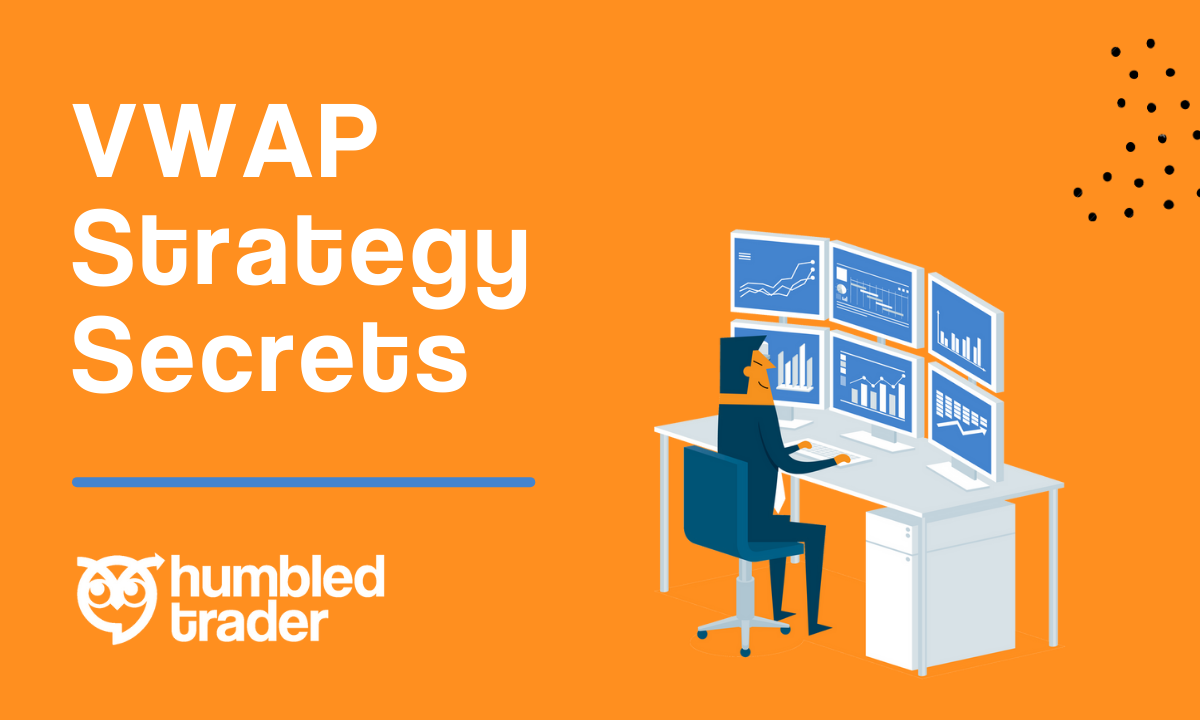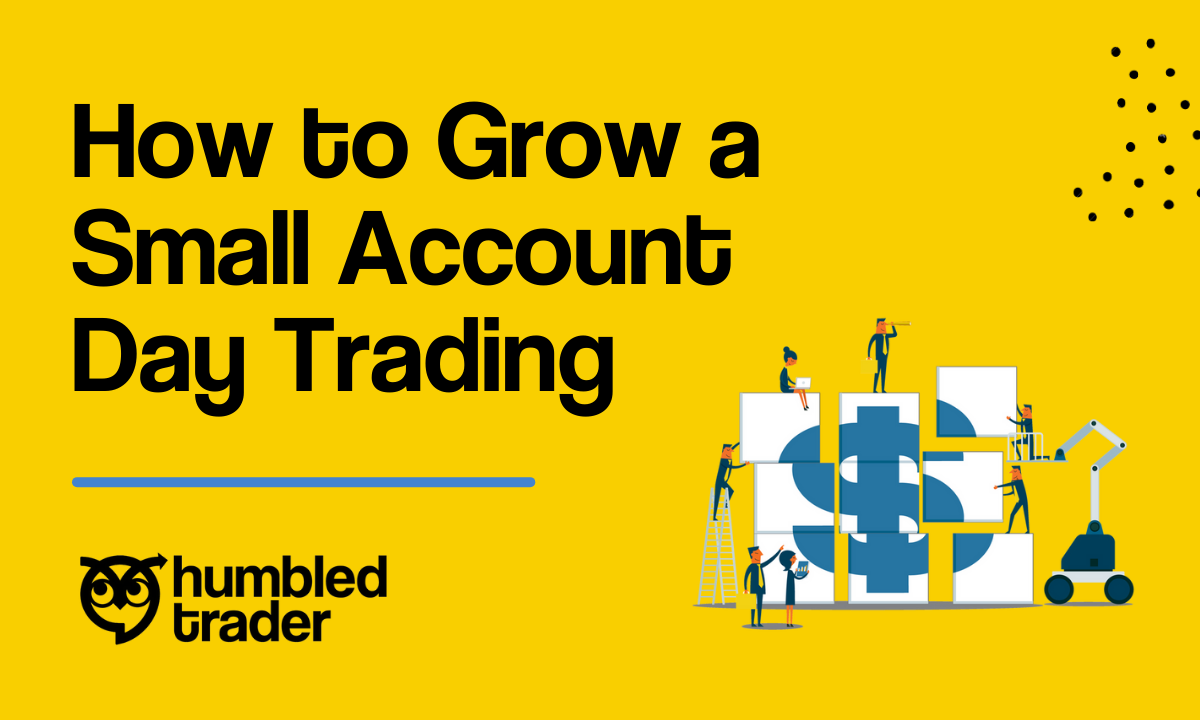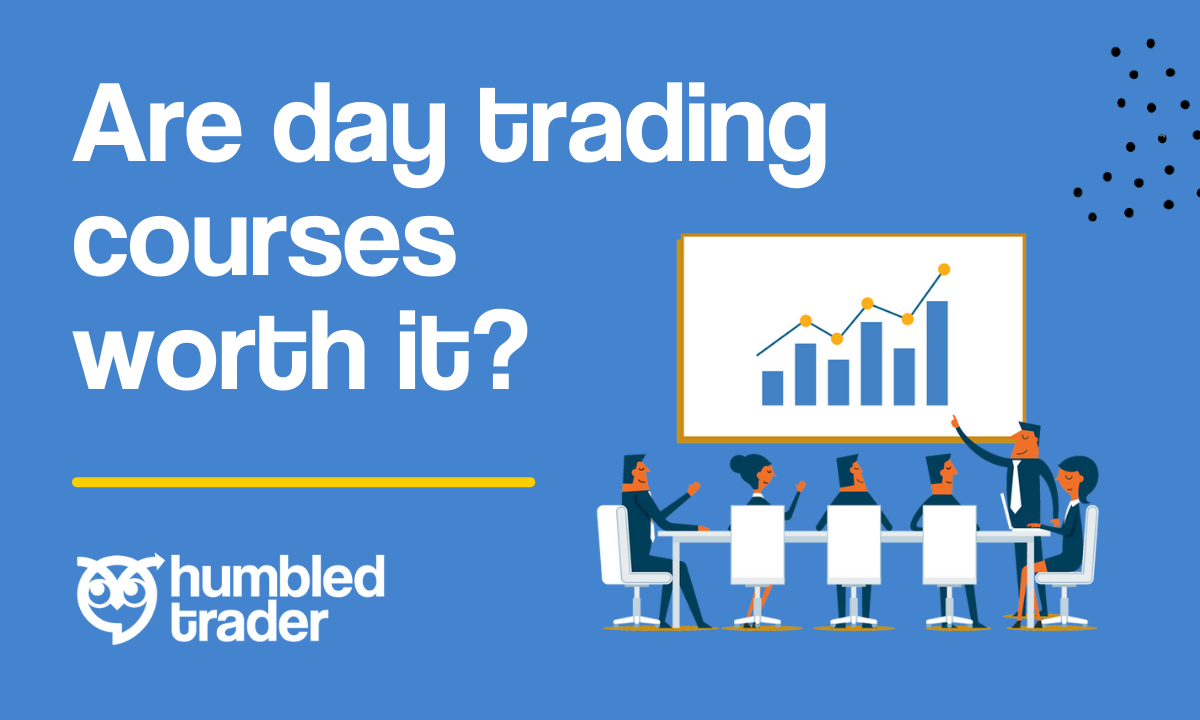VWAP Strategy Secrets: Boosting Your Trading Skills to the Next Level

Those who have followed Humbled Trader for a while, are no strangers to the VWAP strategy. In this article, I will be sharing the advanced techniques of the VWAP trading strategy with you!
Table of Contents: VWAP Strategy Secrets
In the following blog, we are going cover:
What is VWAP?
Why do I use VWAP indicator?
How to use VWAP in day trading?
What are the VWAP strategy secrets?
Is VWAP better than EMA?
Advantages of VWAP
Limitations of VWAP
Frequently asked questions: VWAP Strategy Secrets
What is VWAP?
VWAP, which stands for Volume Weighted Average Price, is a trading benchmark that gives the average price a security has traded at throughout the day, based on both volume and price.
The VWAP indicator works extremely well for large-cap stocks and is especially useful when identifying traps when trading small-cap stocks.
Bullish Signal with VWAP
If a stock is trading above VWAP, traders would perceive it as bullish in the short term because most of the volume is in the bidding of the buyers bidding the price.
Bearish Signal with VWAP
If a stock is trading below VWAP, traders would perceive it as bearish in the short term because most of the volume is in the selling force.
Why Do I Use the VWAP Indicator?
I've been in the trading game for over 8 years now. I've tested various strategies and indicators. These days, I like to keep things simple and clean with just the VWAP indicator and volume on my chart. (I've found this to be the most effective strategy for me so far.)
The beauty of the VWAP indicator is that it's versatile. It works wonders on both small-cap and large-cap stocks and it is equally effective for long- or short-side trading. In my opinion, VWAP is a straightforward, yet powerful tool for day trading.
It is also essential to understand that the VWAP is not a static line but rather a dynamic one that moves and adjusts throughout the trading day as the volume and price of the security change. This dynamism allows traders to gain a more accurate reflection of market sentiment at any given moment, providing critical insights into the potential direction of the market.
How to Use VWAP in Day Trading?
Let’s get our hands dirty. Here, I will share how I use VWAP in my day trading strategies with the basic long and short trading setups.
VWAP Cross-Long Setup
The VWAP (Volume Weighted Average Price) cross-long setup occurs when the stock price crosses above the VWAP. This is typically seen as a bullish signal and could be a good time to enter a long position. Keep in mind that strong volume is often associated with this setup, as it indicates a strong buying interest in the market. On the other hand, weak volume might suggest a lack of conviction among buyers and could potentially lead to a false breakout. Therefore, always pay close attention to the volume when considering a VWAP cross-long setup.
Potential Entry #1
As you can see in the example here, the stock had a weak open but popped above the VWAP with significant volume. (Note: Volume is a very important criterion for a VWAP cross-long setup, so make sure that a large volume accompanies the setup.)
Potential Entry #2
After the breakout, the stock price retraces to the VWAP line and rebounds near the VWAP area.
Also, check if the volume follows. In this example, the selling volume is decreasing, which means the selling force is depleting. And that could be the second entry for a long trade. (Note: Do not set your stop loss on VWAP because you might easily get stopped out.)
Follow-up on the Trade
When you have entered a long trade, you can leave your trade on the run as long as the stock price doesn’t break below the VWAP line. And remember to check on the following things to see if the trend continues:
Daily Charts
Volume
Market Condition
When the Trend Is About to Reverse
If you notice the stock price moving in a jigsaw pattern above the VWAP line, this could indicate that the trend is about to reverse. Pay attention to the volume during this time—if the stock price begins to decrease, this could confirm your suspicions of a reversal. Moreover, if the stock price starts to make lower highs, this is another strong signal that the bullish trend is ending.
VWAP Cross-Short Setup
This setup takes place when the stock price is trading below the VWAP and makes a brief rally to the VWAP, but cannot sustain the upward momentum and starts to fade away from the VWAP.
Potential Entry #1
When the stock price touches the VWAP and starts to decline with significant volume, this is a bearish indication.
Potential Entry #2
If the stock price retraces to the VWAP line and begins to decline again near the VWAP area, this could serve as a second entry point for a short trade. Again, monitoring the volume is important. If the buying volume is decreasing, it indicates that the buying force is depleting.
Follow-up on the Trade
Once you've entered a short trade, you can let it run as long as the stock price doesn’t break above the VWAP line. Pay attention to the:
daily charts
volume
and market condition.
When the Trend Is About to Reverse
If the stock price begins moving in a jigsaw pattern below the VWAP line, this could be a sign that the trend is about to reverse. Pay attention to the volume during this time—if the selling volume starts to increase, this could confirm your suspicions of a reversal.
VWAP Strategy Secrets
When using the VWAP strategy, there are some secrets you might want to take note of to avoid making the mistakes I did before.
VWAP Strategy Secret #1: Understanding the Entry Criteria
Here are a few criteria that you should look for on the chart before you enter a bullish trade:
VWAP reclaim appears when the stock price breaks below the VWAP line and climbs above the line.
When higher highs and higher lows appear, you can notice a clear uptrend has formed.
When the volume is increasing in a consistent manner, that could confirm that the momentum of the trend is sustainable.
The same applies to the bearish trade:
VWAP rejection appears when the stock price breaks below the VWAP line but cannot break above the line once again.
Lower highs and lows indicate a clear downtrend.
Consistent, rising volume could affirm the trend's sustainable momentum.
With these criteria, you could greatly lower the chance of getting into fake-out trades.
VWAP Strategy Secret #2: Using VWAP as a Key Level
How to Use VWAP as a Key Level? Generally, you can view the VWAP (Volume Weighted Average Price) as a guide for support and resistance levels. Often, a stock price will react when it nears the VWAP, so it's important to pay extra attention to the VWAP for any significant bounces. Whenever the stock price crosses the VWAP, it could signal a trend reversal. Quick note: VWAP can be used on both small-cap and large-cap stocks.
VWAP Strategy Secret #3: Maximize Your Profit with VWAP
To maximize your profit, mastering shorting with the VWAP could be one of the strategies you might want to consider. As illustrated by this example, when the stock price declines from a high and falls below the VWAP, it indicates that the stock has weak strength for a rebound. This is the moment when you should close your long position and start considering shorting the stock.
VWAP Strategy Secret #4: Using VWAP to Spot Short Traps Consolidations or Trend Confirmation
VWAP (Volume Weighted Average Price) can serve as a useful indicator for identifying short trap consolidations. Here’s how: If a stock price breaks below the VWAP during a downtrend, it may signal the continuation of the downtrend.
Identifying Short Trap Consolidations
This situation could present a good opportunity to short the stock when the price falls below the VWAP. However, it might also set up a short trap. To avoid potential short traps, consider the following:
Once the stock price breaks below the VWAP, watch for the stock price to stabilize at a certain level without creating new lower lows.
It's crucial to set a stop loss above the VWAP because the VWAP often acts as resistance for a falling stock price. Setting a stop loss above the VWAP can help prevent a short squeeze and identify short traps if the price breaks above the VWAP again.
Confirming Trends
Conversely, if the price remains above (or below) the VWAP and doesn’t retest it, this can provide additional confidence in the confirmation of an uptrend (or downtrend).
VWAP Strategy Secret #5: Don't Put Stop Loss Too Close to VWAP
Setting your stop loss too close to the VWAP can lead to premature exits from your trades. Since the VWAP often acts as a level of support in an uptrend and resistance in a downtrend, a trade can be easily stopped out due to a long wick that temporarily breaches the VWAP. To avoid this, ensure your stop loss is set at a reasonable buffer from the VWAP line.
VWAP Strategy Secret #6: Use VWAP with Pre-market Data
Incorporating pre-market data into your VWAP analysis can provide early insights into market sentiment. If a stock trades above the VWAP in pre-market sessions, this may indicate strong buying interest that could persist into the regular trading session, offering a strategic advantage.
VWAP Strategy Secret #7: VWAP and End-of-Day Trading
The price level relative to the VWAP towards the end of the trading day can offer clues about the prevailing market sentiment. A price above the VWAP suggests bullish sentiment, while below indicates bearish sentiment. This information is valuable for planning your positions for overnight holds and the following day's trading strategy.
VWAP Strategy Secret #8: Multiple Time Frame Analysis
Enhance your trading strategy by analyzing VWAP across multiple time frames. This approach gives you a broader view of market trends, allowing for more informed trading decisions. By understanding the bigger picture, you can align your trades more closely with the dominant market direction, potentially increasing your success rate.
VWAP Strategy Secret #9: Practice Makes Perfect
Remember, successful trading involves a blend of skill, strategy, and continuous learning. Always be open to new techniques and strategies, and consider joining the Humbled Trader Community for further insights and mentorship!
Is VWAP Better Than EMA?
What is EMA?
EMA, or Exponential Moving Average, is a type of moving average that emphasizes recent price data. Unlike simple moving averages (SMAs) that treat all data points equally, EMAs give more weight to recent prices, which makes them more responsive to new information and price changes.
Difference between VWAP and EMA
The key difference between the Volume Weighted Average Price (VWAP) and the Exponential Moving Average (EMA) lies in the factors each considers. EMA focuses purely on price data over a specified period, adjusting more significantly for recent price changes to reflect current market sentiment. VWAP, on the other hand, incorporates both price and volume, offering insights into both the price level and the weight of trade volume at that price. This inclusion of volume makes VWAP particularly useful for understanding the strength behind price moves.
Is VWAP Better Than EMA?
Determining whether VWAP is better than EMA depends on the trader's strategy and goals. For day traders, VWAP may offer more relevant insights because it combines price and volume, giving a fuller picture of market activity and liquidity at different price levels throughout the trading day. This can be particularly valuable in assessing the market's valuation of a stock relative to its daily trading volume.
For swing traders or those looking at longer time frames, EMA might be more beneficial. It helps in identifying the direction of the trend and potential reversal points by responding quickly to price changes, without the volume component that VWAP emphasizes.
Using VWAP and EMA Together
In short, VWAP shows you the relative strength, while EMA shows you the trend. So if you put VWAP and EMA together, you can identify trend reversal.
In the example, when the 9 EMA crosses over VWAP, it may indicate an upcoming breakout. And further, the 9 EMA pulls away from VWAP, which means the stronger the stock is to the upside.
Reasons Why I No Longer Use Indicators
Sharing a perspective on trading indicators, it's important to disclose that I no longer use them. The primary reason for this shift is that I've found indicators to be more of a distraction than a benefit when it comes to observing the real-life price actions of stocks. In my experience, indicators often appear perfect only in hindsight, after a market move has already occurred.
This approach misses the subtle nuances in price action that indicate where the momentum is truly heading. Real-time trading insights come from observing how strongly a stock price reacts to resistance or support levels. These reactions in price action are the most reliable indicators, providing the clearest anticipation and interpretation for making trade decisions.
However, it's important to clarify that using indicator pairs like VWAP and EMA can be quite beneficial, especially for beginners. They offer a structured way to understand trend changes and their extent. For those starting out, these tools can serve as a useful foundation to learn about market dynamics before moving to more nuanced and direct methods of market analysis, such as pure price action trading.
Advantages of VWAP
VWAP, or Volume Weighted Average Price, is a powerful tool for traders. Here are the advantages of in-corporate VWAP into your trading setups:
Including volume data
The main benefit of VWAP is its use of volume data for accurate price representation. It provides real-time insights into market dynamics, and its broad recognition influences price action.
Identifying support and resistance
Using VWAP can aid in identifying key levels of support and resistance and can serve as a signal for potential trend reversals.
Customization with Anchored VWAP
Lastly, its versatility is extended by Anchored VWAP, which allows traders to select a specific starting point for the calculation, making it adaptable to various trading strategies and timeframes.
Limitations of VWAP
While VWAP is a handy tool, it's not a crystal ball that predicts future market direction. It's like a friendly guide, helping traders understand if a security's price is strutting above or shyly lagging below the average. Remember, it is crucial to invite other indicators and analyses to the party to make savvy trading decisions.
Intraday indicator
VWAP, resetting daily, is designed for intraday use and, thus less useful for long-term analysis.
Lagging indicator
Being a moving average, VWAP may not promptly reflect sudden price changes.
Limited predictive value
VWAP isn't predictive and shouldn't be the only basis for trading decisions.
Conclusion
Trading with the VWAP strategy can be highly effective when done correctly. It provides traders with valuable insights into market sentiment and price trends, allowing for more informed trading decisions.
Whether you're a beginner or an experienced trader, understanding the secrets of the VWAP strategy can significantly enhance your trading skills. However, like any other trading strategy, it should be used along with other tools and indicators for optimal results. Remember, continuous learning and staying updated on market trends are keys to successful trading.
Interested in learning more about VWAP strategy? Join the Humbled Trader Community
There's much more to explore about the VWAP trading strategy. If you are interested in learning more, consider joining the Humbled Trader Community!
Within the community, not only will you find my entire trading system but also helpful trading tips and even the opportunity for individual mentoring. This can help identify areas for improvement in your trading, so you can improve your trading skills easily!
Join The Humbled Trader Community TodayFrequently Asked Questions: VWAP Strategy Secrets
Is VWAP better than EMA?
Yes, VWAP can be a better indicator than EMA for day traders. VWAP takes into account both price and volume, providing a more comprehensive view of the market activity. However, EMA might be more beneficial for swing traders as it focuses more on recent price changes.
What is the VWAP strategy?
The Volume Weighted Average Price (VWAP) strategy is a trading benchmark used by traders that gives the average price a security has traded at throughout the day, based on both volume and price. It is especially useful when identifying traps when trading small-cap stocks.
How can I use the VWAP indicator in day trading?
You can use the VWAP indicator in day trading by setting up long and short trades. This involves recognizing potential entry points, following up on the trade, and recognizing signs of a trend reversal.
What are some secrets to using the VWAP strategy?
Some secrets to using the VWAP strategy include understanding the entry criteria, using VWAP as a key level, maximizing your profit with VWAP, using VWAP to spot short traps consolidations or trend confirmation, and not setting your stop loss too close to VWAP.
What resources are available for learning more about the VWAP strategy?
You can learn more about the VWAP strategy by joining the Humbled Trader Community. This community provides helpful trading tips and even individual mentoring opportunities.
What is the difference between VWAP and EMA?
The Exponential Moving Average (EMA) identifies short-term market trends but ignores trade volume. The Volume Weighted Average Price (VWAP) includes volume, offering a more comprehensive view of market dynamics and a more accurate daily average trading price.
What are the common VWAP trading strategies?
Here are the 3 common VWAP trading strategies:
VWAP Breakout: Enter long when the price crosses above VWAP for a potential uptrend; go short when it crosses below for a possible downtrend.
VWAP Bounce: Use VWAP as dynamic support/resistance. Go long when the price bounces off VWAP from below, short when it bounces off from above.
VWAP Cross: Moving average crossovers with VWAP can signal entry/exit points. Go long when the short-term average crosses above VWAP; go short when it crosses below.
Don’t feel like reading? Watch the video.



